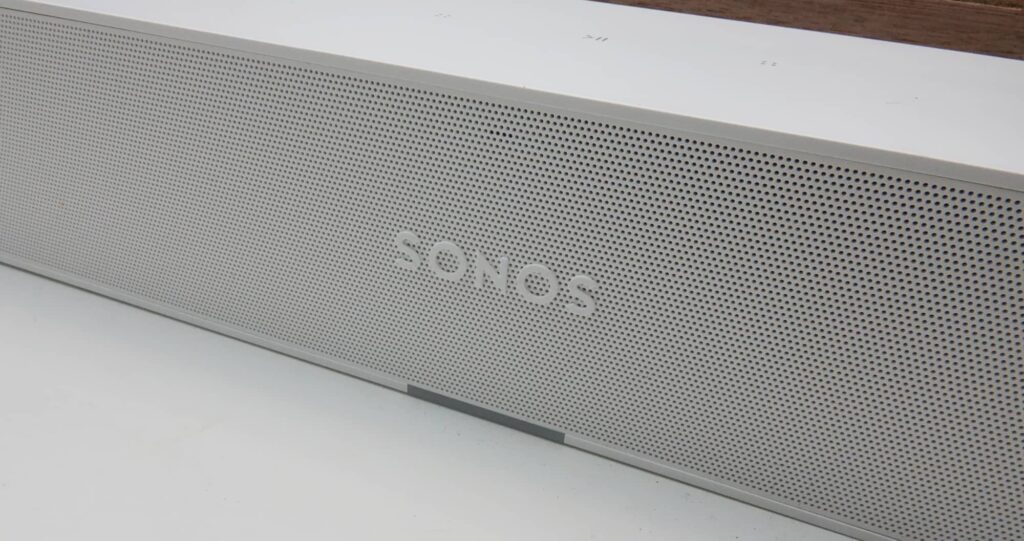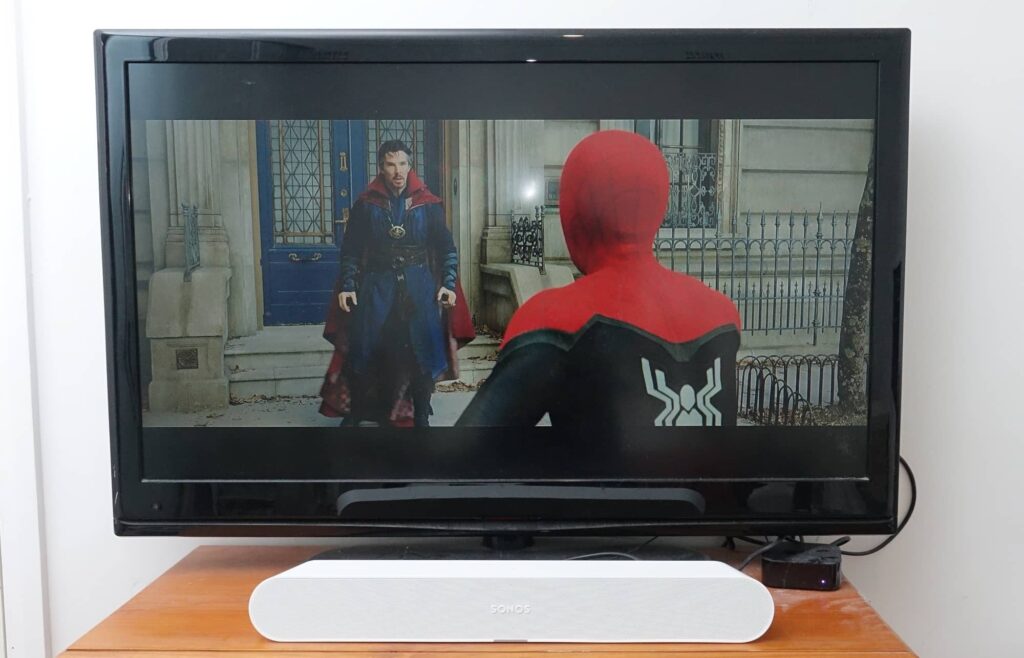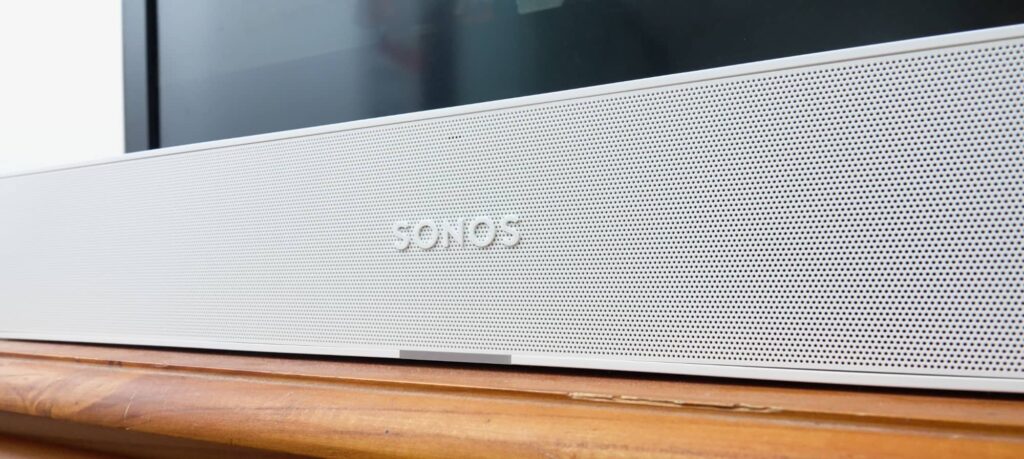Quick review
The good
The not-so-good
Well designed and next to impossible to fault, the entry-level Sonos Ray is one of the more accessible and expandable soundbars yet.
We don’t always see products with the names of people, but the Sonos Ray clearly classes as one. We’ve yet to meet an Arc or a Beam, but there are plenty named Ray, even though that’s also not the point here.
Following the pattern of sound, sound can appear in an arc, beamed, or as a sound ray. We’ve already seen the first two as speaker products from Sonos, and now the other is one, as well.
It follows patterns, as well. While the Sonos Arc was the big high-end soundbar from Sonos and the Beam is the mid-range model, the Sonos Ray is focused on the entry level, getting what Sonos is known for in speaker design into a smaller size and price point.
And when you see it, you’ll quickly understand why this $399 speaker could be a winner for many looking to upgrade their home theatre experience.
Design and features
Easily Sonos’ smallest soundbar, the Ray is surprisingly feature packed, moving beyond the simple two channel setup you might expect in a budget soundbar, and making it surprisingly well thought out.
You’ll find two midwoofers for mid-range sounds, two tweeters for highs, and ports on each side for the bass sounds to move the air inside over a slightly longer distance, something soundbars don’t typically arrive with.
The combination of hardware is matched to four Class D amplifiers, though the subwoofer isn’t likely to replace a real subwoofer. Clearly, Sonos would love you to consider its Sub, a wireless dedicated Sonos subwoofer.
Technically, this is a 3.0 soundbar, covering left, right, and centre channels, but not that sub. You can still get a sub sound out of it thanks to the long ports inside, but it’s not necessarily going to emphasise the bass.
Sonos will take its sound from a TV over an optical port, distinct from the HDMI requirement on its other soundbars, but it can also connect to your network over a 10/100 Ethernet port and 802.11b/g/n wireless, talking to music services such as Apple Music and Spotify, and even Apple devices over AirPlay 2.
Inside, there’s a chip to handle processing of signals, dealing with stereo, Dolby Digital 5.1, and DTS, but you won’t see support for the spatial sound of either Dolby Atmos or DTS:X in this model.
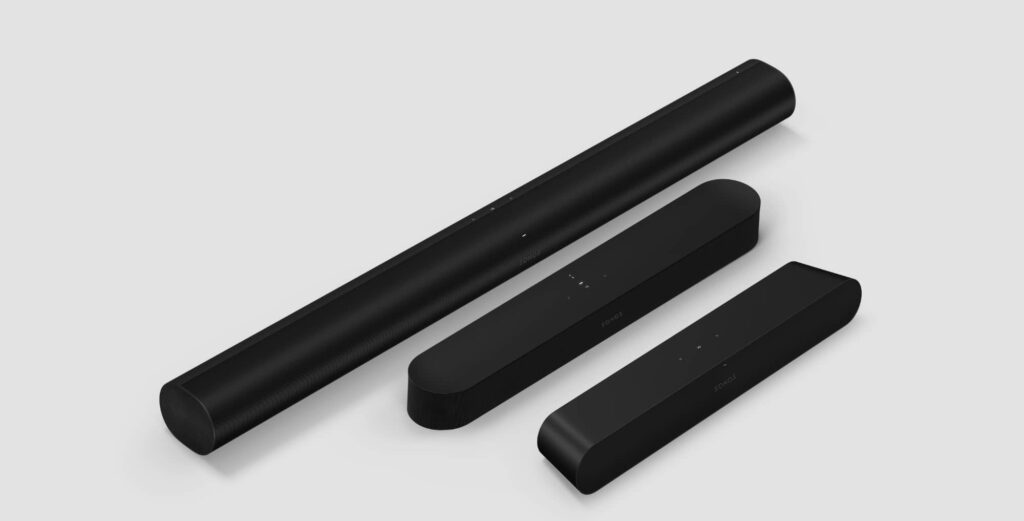
Rather, this is focused on the entry level, though it still offers support for Sonos’ multiroom capability to other speakers, meaning you can also pair it with two other speakers to expand the sound at the back.
There’s also an infrared receiver found on the front, great for mapping controls from your TV remote, and much like other Sonos speakers, it’ll play nicely with other Sonos speakers in the range, expanding the feature set or just working within the whole multiroom concept and synchronising sound.
And it comes in a design that is small, fitting comfortably below any TV, though looking positively small when under anything 42 inches and higher. These days, everything is 42 inches or higher, so the Ray is going to look small under pretty much everything.
It’s encased in white or black plastic with a minimalistic look not far from what we saw on the Sonos Beam Gen 2, and will fit in with most entertainment units. This isn’t your typical black bar, for sure, and if you opt for the white Sonos Ray, you’ll even find a white optical cable in the box (black models get a black one, but we’ve never seen a white optical cable, so that feature is worth mentioning).
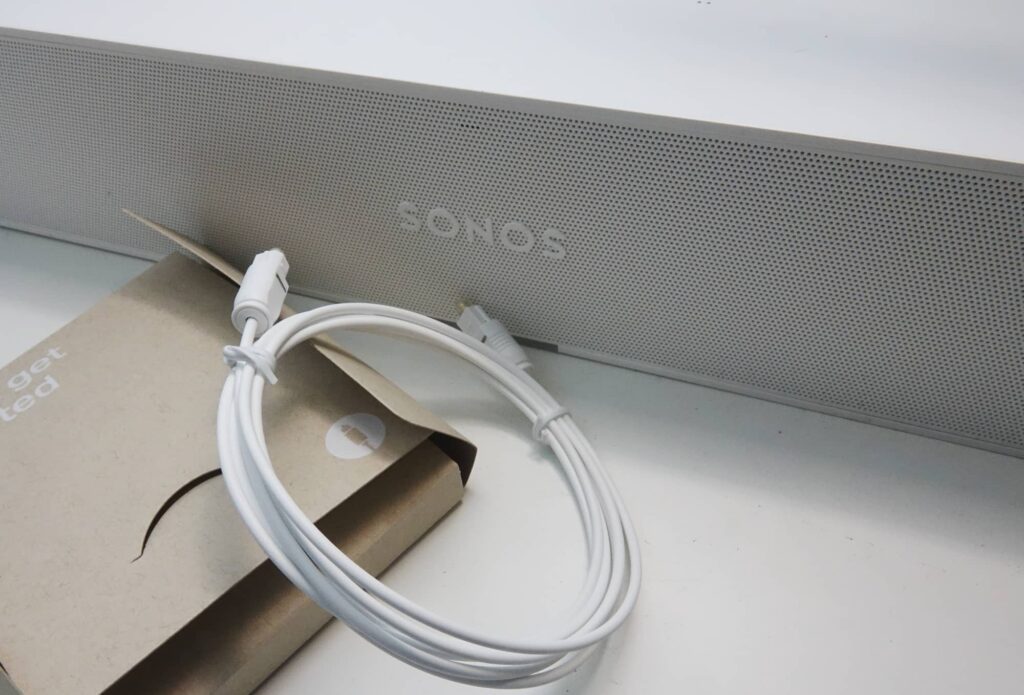
In-use
Controlling the Sonos Ray comes down to your phone or tablet, the Sonos app being central to the experience, but you’ll also find controls up top for volume and playback control, while your TV remote is also going to be handy
While the bigger Sonos models use HDMI-CEC to pick up on your TV’s remote, the Sonos Ray features an infrared port built into the design and can learn the controls for volume on your remote. It means if you don’t have your phone around, you could just keep on using the remote for your TV, or even your media player, like an Apple TV remote, controlling things that way.
Performance
Like all Sonos soundbars, there’s really two styles of sound you can expect from this one: music and movies.
First, there’s films, which is largely the main point of the Sonos Ray. If you’re not happy with your TV’s sound, this soundbar is meant to boost the performance, and boost things it can.
Shifting from the mediocre speakers on a TV, we found a solid stereo sound on offer, with solid vocals and action available when we tested the Ray with the recent Spider-Man: No Way Home.
There’s nothing special to really test here, mind you — no support for Dolby Atmos spatial sound — but the movie sound quality is good enough for most people to be happy with, producing great highs, rounded mids, and a surprising push for bass given there isn’t a real subwoofer here at all.
We ended up spending most of the time with the Sonos Ray playing music, because a Sonos sound system typically excels at that. And tested with the Pickr Sound Test, which you can experience for yourself, that was pretty clear.
In the electronic sounds of Tycho and Daft Punk, we were surprised by a low sound that was meatier than expected, and a balance that came across as slightly warm. There’s a good punch that delivers, and while you can hear the bass, you won’t feel it.
Take the guttural sub-bass in FKA Twigs “Two Weeks”, because it’s missing in action here. The bass is there, vibrant and punchy in Mark Ronson’s “Uptown Funk” and Charlie Puth’s “Done For Me”, but it’s not going to rock your world like a t-rex leaving his enclosure. You know what we’re talking about.
However, the sound is still solid, and in older tracks, the balance was warm and friendly. Tracks by Marvin Gaye, David Bowie, The Beatles, Paul Simon, and The Who all delivered an excellent soundstage with a surprisingly warm tonality. Mostly balanced, and it works in classical and jazz, too.
We shouldn’t be surprised, mind you. Look at the Sonos Roam and you get a picture of what the company can do in small spaces. The Ray is another small space, and it’s one that we’re seeing Sonos work some magic in, as well.
It’s worth noting that the Sonos Ray will by no means fill a room the way a bigger soundbar like the Arc can, as it’s just not that big of a soundbar. This is for small rooms and comparatively small budgets, which becomes obvious when you see that price.
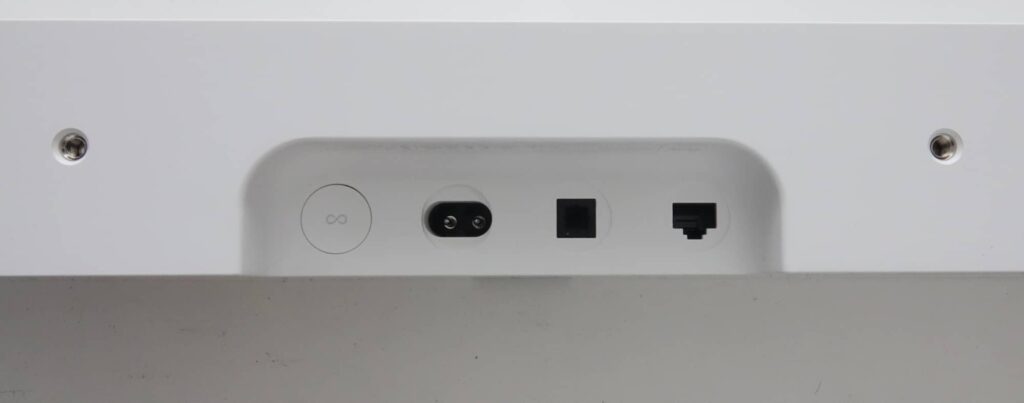
Value
And when you see that price, the Sonos Ray starts to make even more sense.
Priced at $399 in Australia, the Sonos Ray is small and wallet friendly, arriving to compete against the sort of soundbars that typically aim for the $250 to $350 price point from competitors such as Sony, Samsung, and LG.
Competitors in this space are usually 2.1 systems with two channels — left and right — in the soundbar, while a subwoofer might be in the body, but also could be in a separate subwoofer you can set up around the home.
The external sub is clearly lacking in this package, so the sub performance mightn’t be quite as strong, but it’s solid all the same.
Factor that in with support for multiroom and the ease of which you can expand the soundbar using either Sonos speakers or Sonos-compatible speakers made by Sonos, and the whole thing just really feels solid value.

We’re actually reminded of the much older Sonos Playbar in the Ray, because the feature set and sound is like that, only newer and in a smaller design.
Much has changed in the nine years since the Playbar was introduced, back in 2013, though the hardware and feature set is similar. That, too, was a 3.0 soundbar with physical controls and no voice assistant, so in many ways, the Ray is the new incarnation of the Playbar. Kinda sorta.
Given the competition today, we imagine there may even be buyers confused by the lack of an external sub — after all, some of these competing models come with one. But Sonos does make a serious thousand dollar subwoofer if you need it, and we’re not sure you will. The bass is just decent enough here, much like it was on the Playbar, which is still an excellent soundbar in its own right.
What needs work?
About the only thing we feel like could be improved upon with the Sonos Ray is the lack of voice assistants. It’s just a feature that feels like it should be there.
We get it: technically the Sonos Ray is the entry level no frills soundbar for the company, and much like how there’s a Sonos Roam SL without the microphone and voice assistant in the small portable Roam, the Ray is kind of like that against both the Beam and Arc.
Except it’s not. The Ray is not a no frills soundbar. It’s a full feature soundbar stuck in three channels, but it’s as good as the Playbar ever was only smaller.
It is an excellent soundbar that offers most of what makes a Sonos speaker great, sans the voice assistants, and we think they should be a part. There’s simply no reason beyond cost that they’ve not been included, and we think that’s a bit meh.
Final thoughts (TLDR)
The smallest soundbar in the Sonos line-up is also its most accessible and really easy to connect with.
At $399, the Sonos Ray provides entry-level excellence to people who want more than what their TV can offer with impressive sound for movies and music alike. More than that, it’s a sound system that can expand with you.
Want to add a subwoofer to push the bass? Sonos makes something for that. Looking for rear speakers to provide more of a proper surround sound experience? Throw in a couple of Sonos One models, maybe two Sonos Fives, or an IKEA Symfonisk Picture Frame on each side of the wall behind you. Really, you have choices.
And later on, if you decide to upgrade your experience to Atmos, you can use those extra speakers with something else Sonos makes, like the Beam Gen 2 or the superior Sonos Arc.
This soundbar is about bringing you in and giving you options. It’s just excellent at that. While you mightn’t know many great people named Ray, the Sonos Ray stands out and is hard to fault. It’s your friend in sound and highly recommended.





